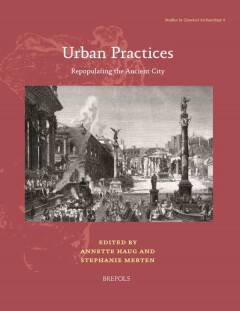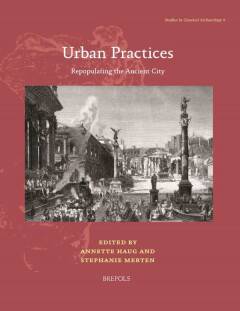
- Afhalen na 1 uur in een winkel met voorraad
- Gratis thuislevering in België vanaf € 30
- Ruim aanbod met 7 miljoen producten
- Afhalen na 1 uur in een winkel met voorraad
- Gratis thuislevering in België vanaf € 30
- Ruim aanbod met 7 miljoen producten
Zoeken
Omschrijving
Cities in the ancient world, much like in the modern era, were not simply a locus for population and a hub for social, cultural, and economic activity, but were themselves the products of urban practices. This volume draws together two often disparate fields - urban space and human practice - to explore the actors and actions that underpinned ancient cities and to offer unique insights into the lives of those who dwelt there. Placing particular emphasis on social practice theory, the contributions gathered together in this book seek to analyse the development of the city, especially public urban spaces, from the archaic period up to Roman Imperial times. A key focus is on infrastructure, public spaces used for politics (particularly the Forum Romanum), and the role of sanctuaries and the way in which they were shaped by cult activity. Through this unique approach, this volume is able, for the first time, to bring the inhabitants of ancient cities to the fore, and in doing so, to offer key insights into the development of spatial routines, the interaction of these routines with the material setting of a city, and the way in which cities themselves played an important role in shaping the people and practices within them.
Specificaties
Betrokkenen
- Auteur(s):
- Uitgeverij:
Inhoud
- Aantal bladzijden:
- 172
- Taal:
- Engels
Eigenschappen
- Productcode (EAN):
- 9782503584614
- Verschijningsdatum:
- 6/02/2020
- Uitvoering:
- Hardcover
- Formaat:
- Genaaid
- Afmetingen:
- 216 mm x 279 mm
- Gewicht:
- 680 g

Alleen bij Standaard Boekhandel
+ 190 punten op je klantenkaart van Standaard Boekhandel
Beoordelingen
We publiceren alleen reviews die voldoen aan de voorwaarden voor reviews. Bekijk onze voorwaarden voor reviews.











